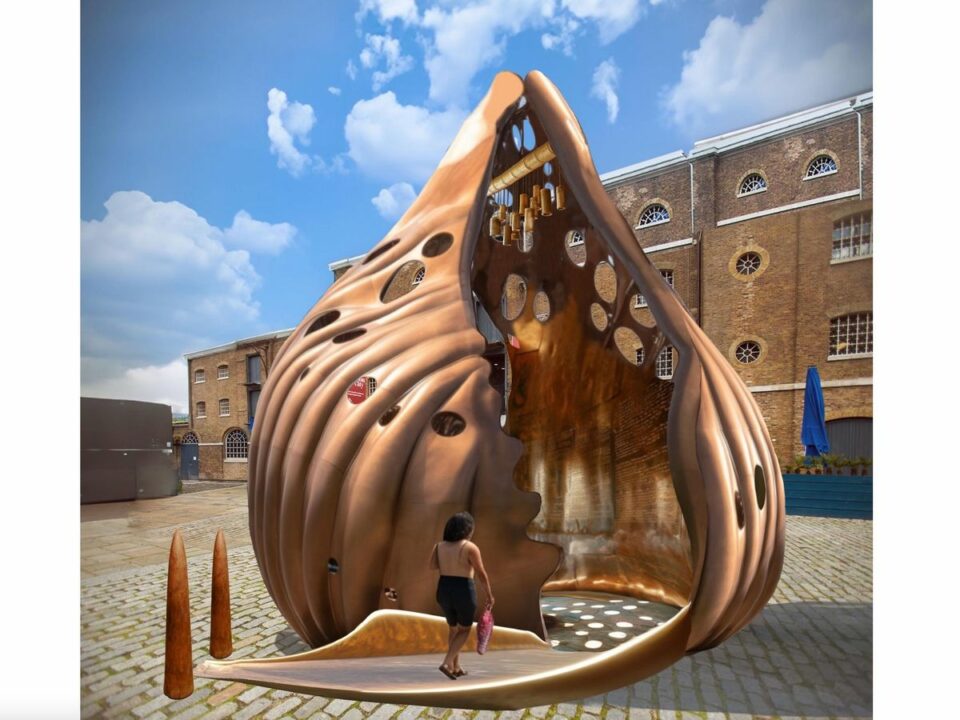How was the London memorial developed in collaboration with the community?
Unveiling London’s Tribute to Victims of the Trans-Atlantic Slave Trade: A Powerful Memorial Design
London, a city with a rich and complex history, has recently unveiled a powerful new memorial to honor the victims of the trans-Atlantic slave trade. The monument, located in the heart of the city, serves as a somber yet dignified reminder of the countless lives lost and the enduring legacy of slavery. In this article, we will explore the significance of this memorial and the design elements that make it such a poignant and important addition to the cityscape.
The History of the Trans-Atlantic Slave Trade
Before delving into the specifics of the London memorial, it is important to understand the historical context that surrounds it. The trans-Atlantic slave trade, which lasted from the 16th to the 19th centuries, saw millions of Africans forcibly taken from their homelands and transported to the Americas, primarily to work on plantations and in other forms of labor. This brutal and dehumanizing enterprise not only resulted in the loss of countless lives but also had profound and enduring social, economic, and cultural consequences for both the African continent and the countries that participated in the trade.
Understanding the Impact of the Memorial
Against this backdrop, the unveiling of a memorial in London is significant for several reasons. First and foremost, it serves as a tangible acknowledgment of the city’s historical involvement in the slave trade. London was a major hub of the trans-Atlantic slave trade, with its ports playing a crucial role in the transportation of enslaved individuals to the Americas. By erecting a memorial, the city is taking a crucial step towards reckoning with this troubling past and publicly acknowledging the suffering inflicted upon so many people.
At the same time, the memorial is a testimony to the resilience and strength of the descendants of those who were enslaved. By paying tribute to the victims of the trans-Atlantic slave trade, the monument serves as a symbol of remembrance and a source of healing for those whose ancestors were directly impacted by this dark chapter in history.
An Overview of the Memorial Design
The design of the memorial itself is both striking and deeply moving. The centerpiece of the monument is a large, bronze sculpture that depicts a group of enslaved individuals in various poses, each conveying a sense of strength and defiance in the face of adversity. The sculpture is surrounded by a circular platform, which serves as a space for contemplation and reflection.
In addition to the sculpture, the memorial features a series of inscriptions that provide historical context and honor the memory of those who suffered as a result of the trans-Atlantic slave trade. The inscriptions are accompanied by quotes from prominent abolitionists and other historical figures who advocated for the abolition of slavery and the recognition of the humanity and dignity of all people.
The entire memorial is situated within a peaceful and contemplative public space, providing visitors with an opportunity to engage with the history and significance of the monument in a meaningful and respectful manner.
Benefits and Practical Tips
For those who wish to visit the memorial in person, there are a number of practical tips to keep in mind. The monument is located in a central area of London, making it easily accessible by public transportation. Visitors should plan to spend ample time at the site, as the experience of engaging with the memorial and its surroundings is best appreciated at a leisurely pace.
Case Studies
One notable aspect of the London memorial is the way in which it was developed in collaboration with community organizations, historians, and descendants of those who were enslaved. This collaborative approach ensured that the memorial would accurately reflect the experiences and perspectives of those most deeply impacted by the trans-Atlantic slave trade. This model of community engagement and inclusive design can serve as a valuable case study for other cities and organizations seeking to create meaningful memorials and monuments.
First-Hand Experience
Visitors to the London memorial have described the experience as deeply moving and thought-provoking. Many have noted the power of the sculpture and inscriptions in evoking a sense of empathy and understanding for the struggles faced by those who were enslaved. The memorial has also been praised for its role in fostering conversations about the legacy of slavery and the ongoing fight for racial justice and equality.
the unveiling of London’s tribute to the victims of the trans-Atlantic slave trade represents a significant milestone in the city’s efforts to confront its past and honor the memories of those who suffered as a result of the slave trade. The design of the memorial, with its powerful sculpture and evocative inscriptions, serves as a potent reminder of the enduring impact of this dark chapter in history. As visitors engage with the monument, they are invited to reflect on the past, consider the present, and envision a more just and equitable future for all.
The presentation of London’s first monument commemorating the victims of the trans-Atlantic slave trade has been highly anticipated. It features a towering bronze cowrie shell, known as The Wake, which will be erected by 2026 in memory of enslaved Africans.
Khaleb Brooks, an artist with Mississippi roots, designed the 23-foot-tall sculpture. His idea was chosen from among six proposed memorials dedicated to those who suffered in the trading system that had a significant impact on London according to a statement from the mayor’s office.
London played a central role in transporting about 3.4 million Africans across the Atlantic between 1640 and 1807 using British ships. The sculpture will stand at West India Quay, where goods produced by enslaved individuals entered the United Kingdom.
Brooks envisions The Wake as an acknowledgment that everyone is impacted by history and hopes it will inspire progress toward equality for all involved parties according to his remarks to Guardian’s Lanre Bakare
The memorial offers an opportunity for visitors to enter and reflect within its walls. Decorated with sculptures of sugar loaves representing forced labor behind sugar production those walls are inscribed with names and spaces for identifying unnamed members of this tragic historical event.
Brooks was inspired by cowrie shells which were used as currency in Africa and discovered their use extended beyond goods purchases into human transactions such as Olaudah Equiano being sold for 172 cowrie shells in the eighteenth century according to accounts documented by slave trade abolitionists
Khalab Brook spent time as artist-in-residence at Liverpool’s International Slavery Museum before unveiling this project which adds depth especially when juxtaposed against removal last year of Robert Milligan statue following racial justice protests surrounding his involvement as merchant enslaver Also aligned with Mayor Sadiq Khan’s plan announced last spring allocating £500,000 (roughly $656,000) towards commissioning slavery victim tribute artwork.
filed under London City category: African History Art Arts British History Colonialism England European History Monument Sculpture Ships Statues


